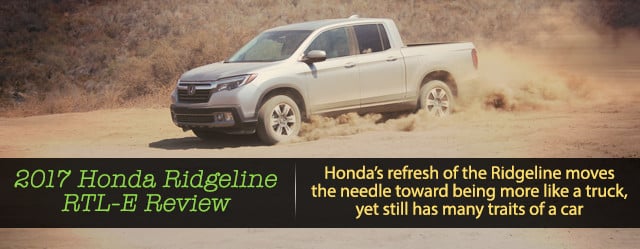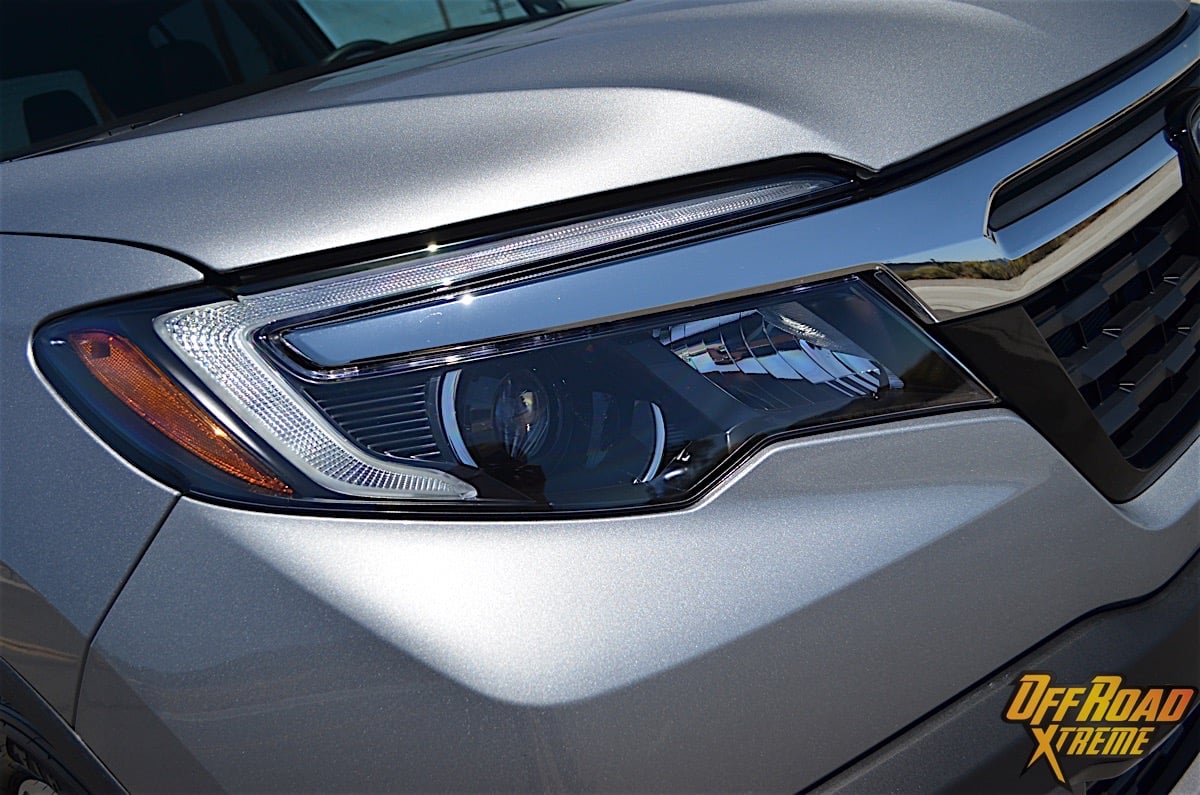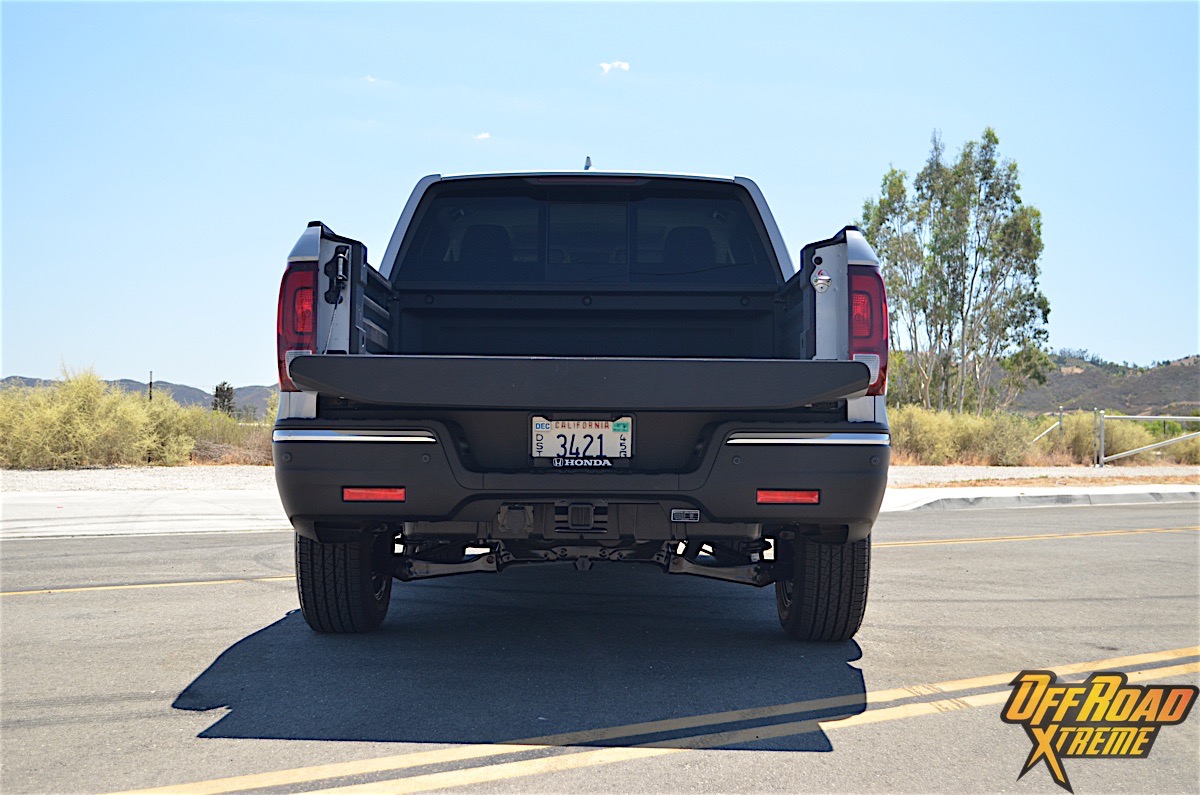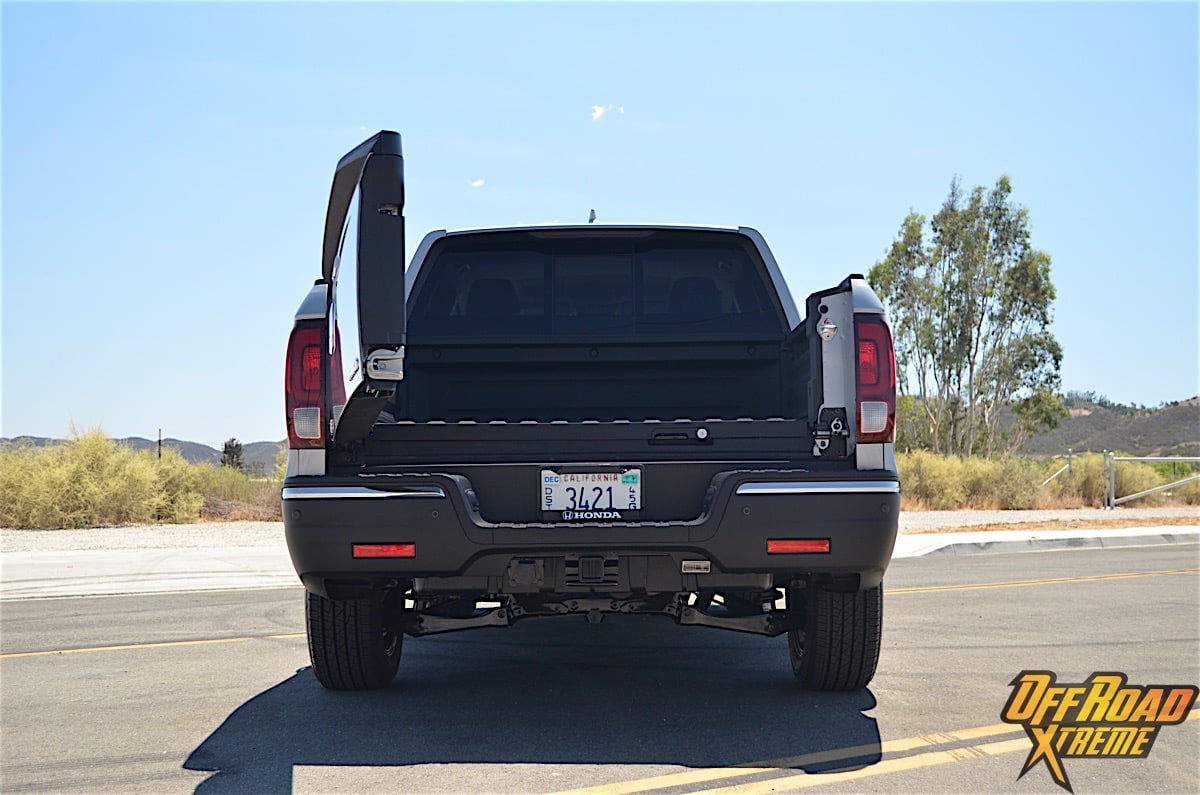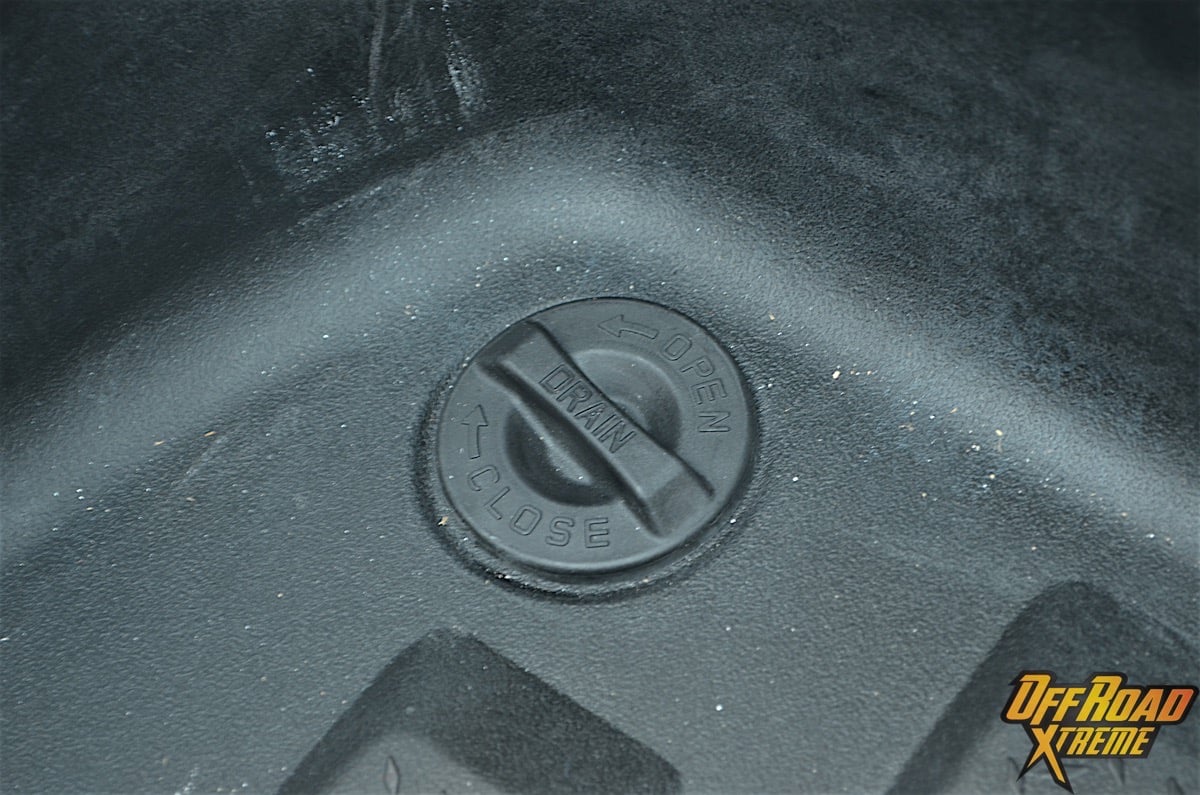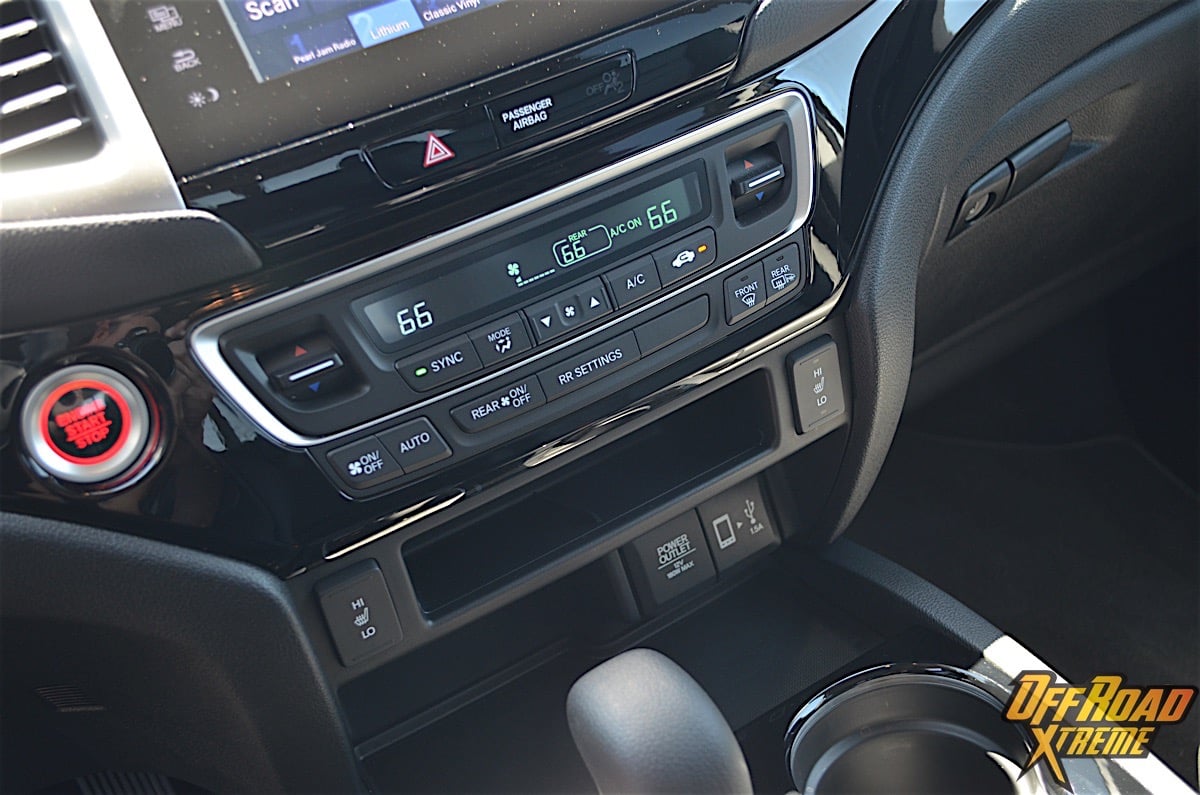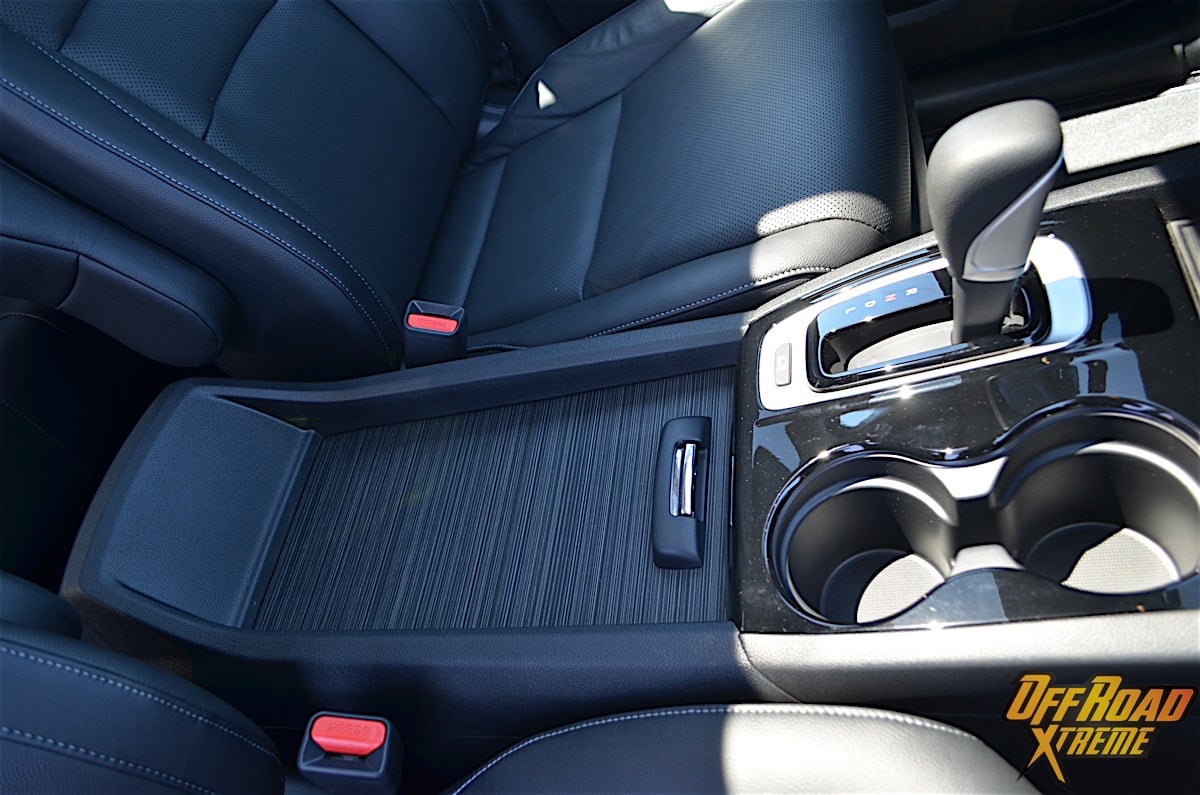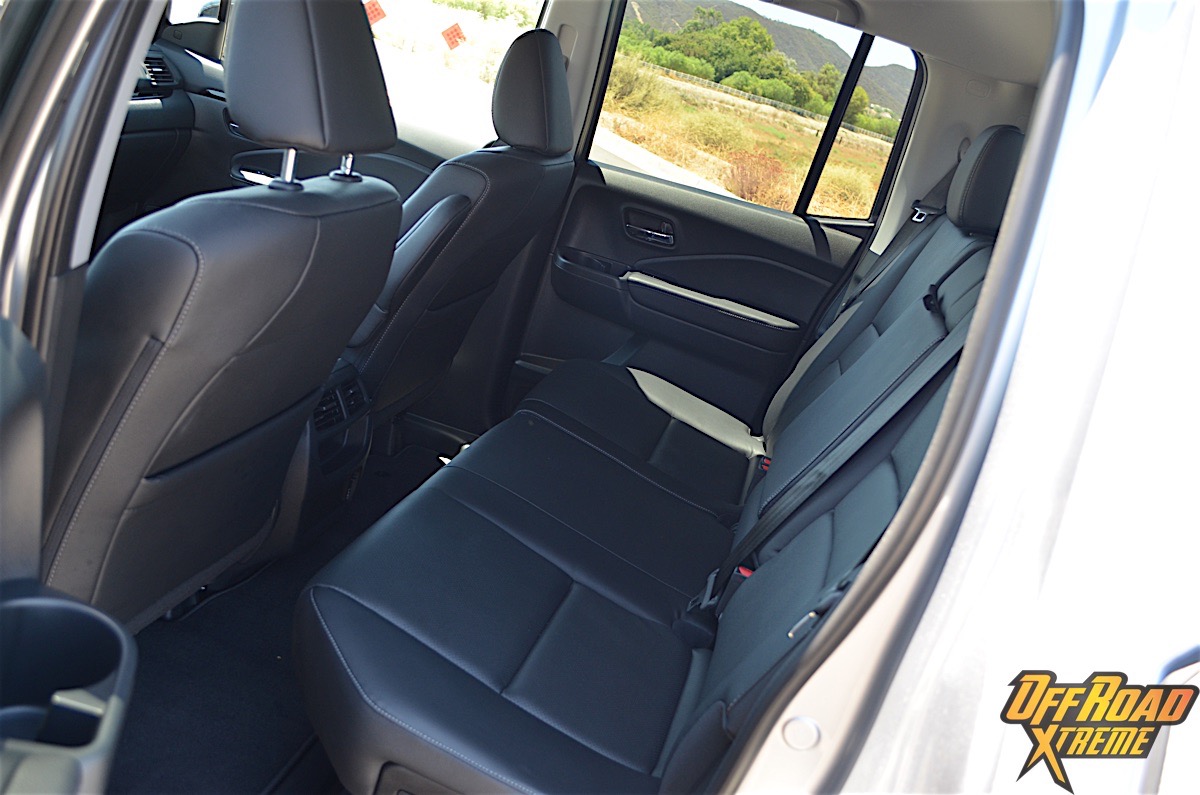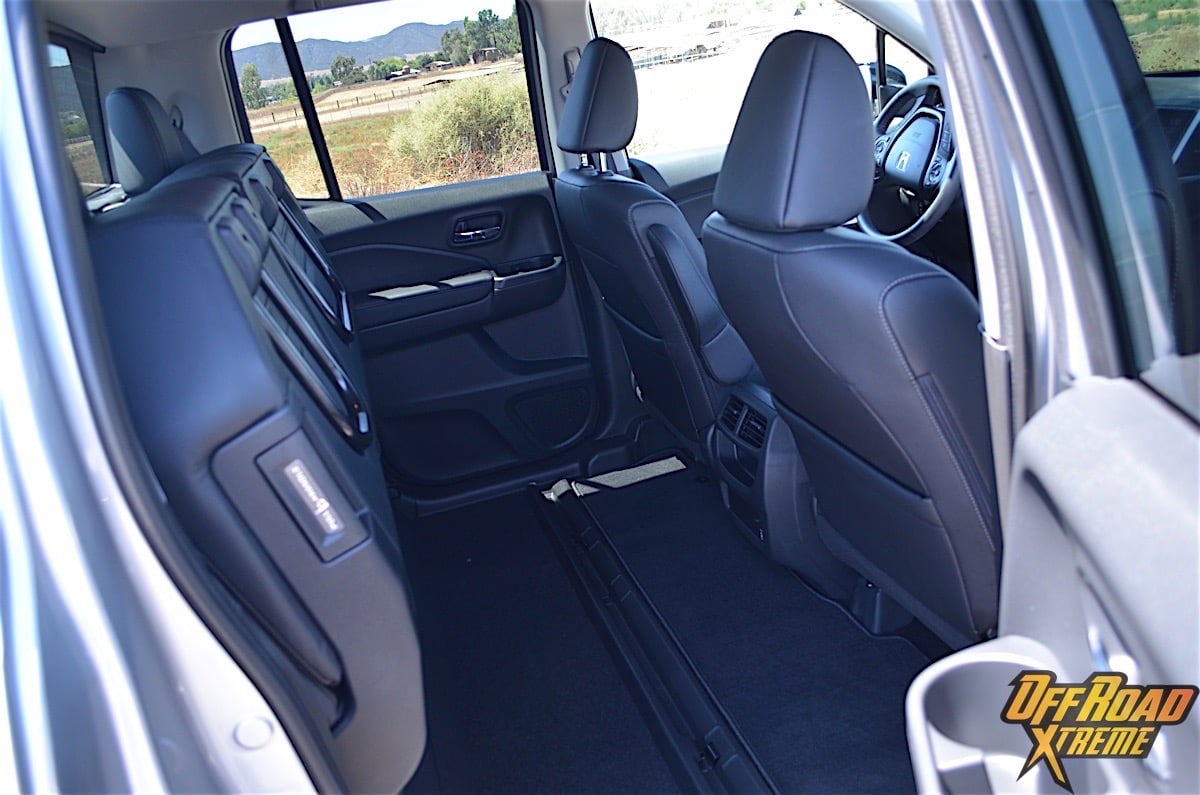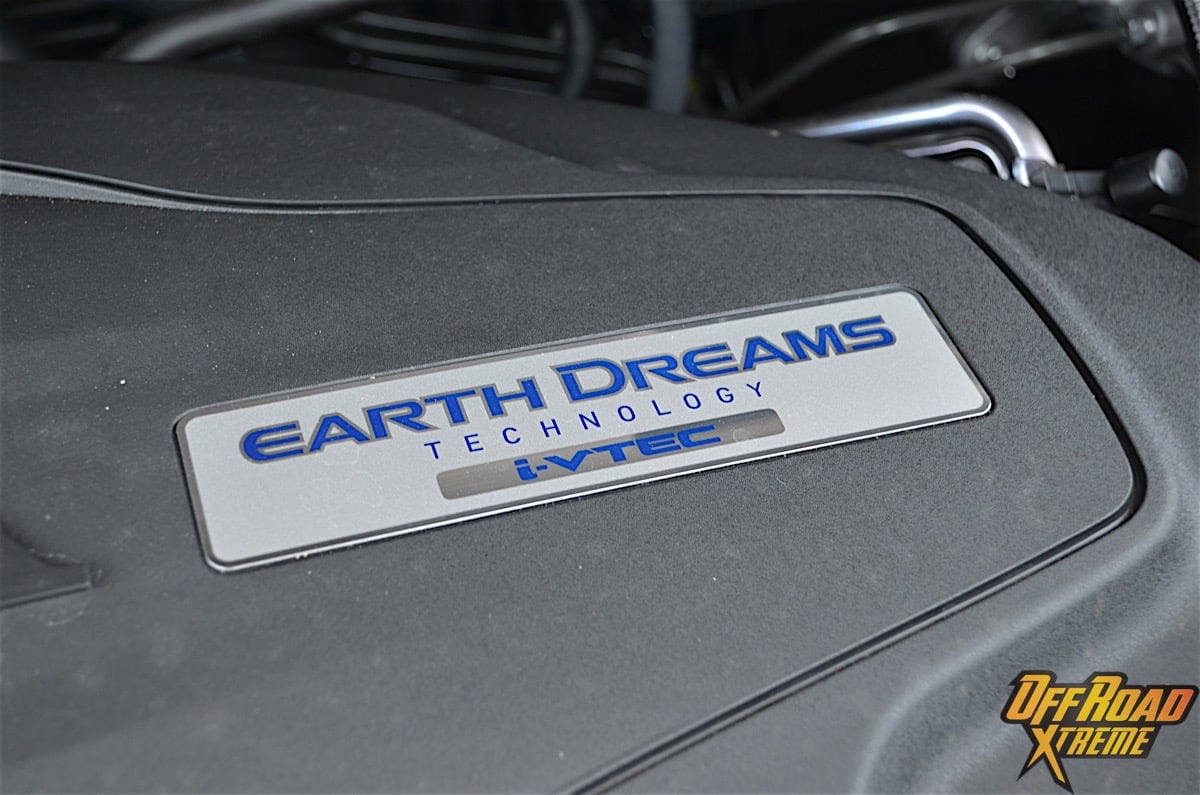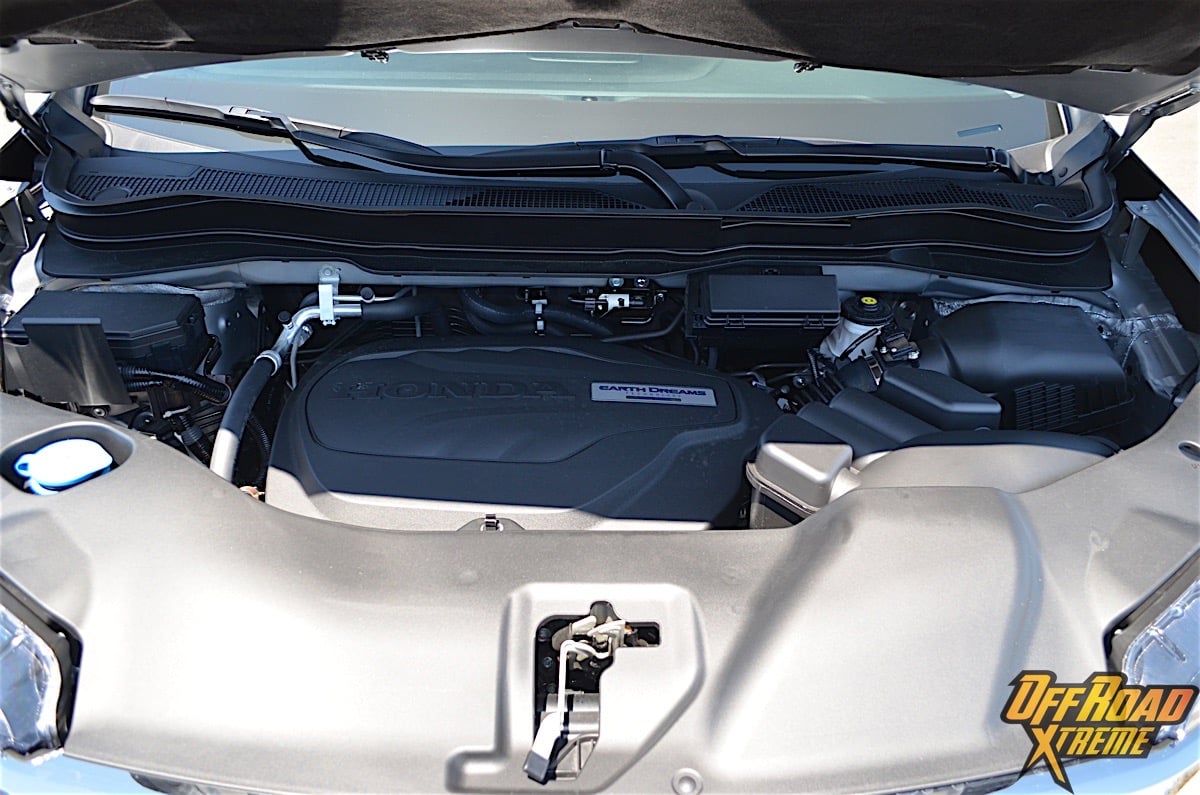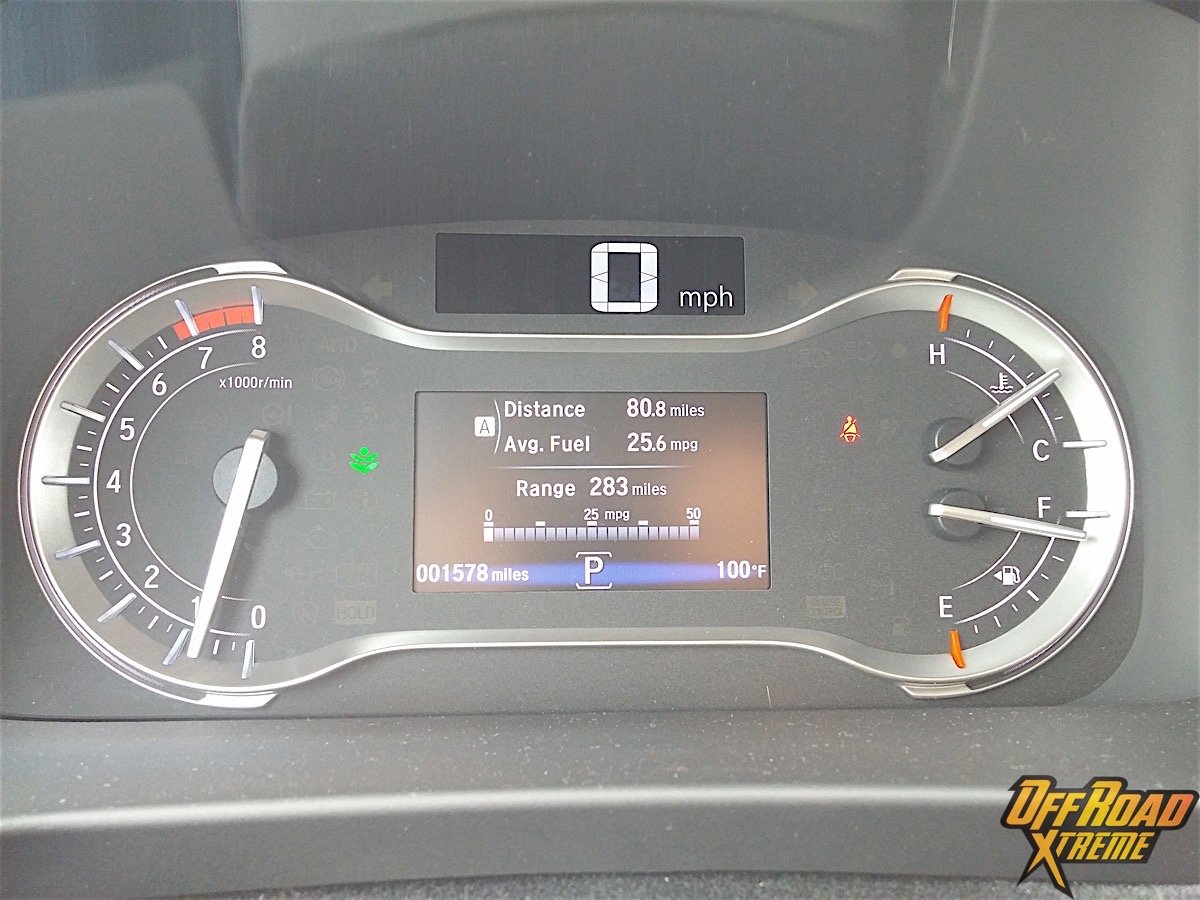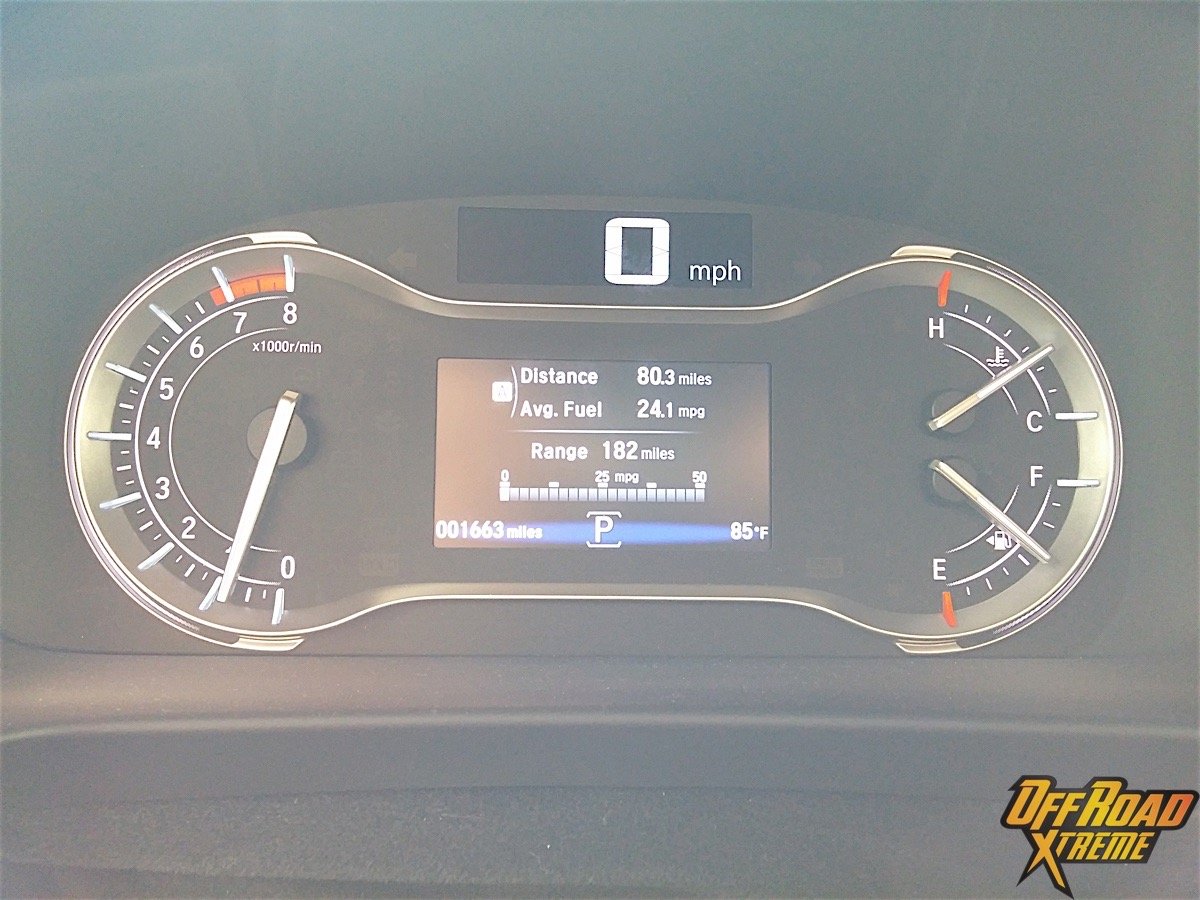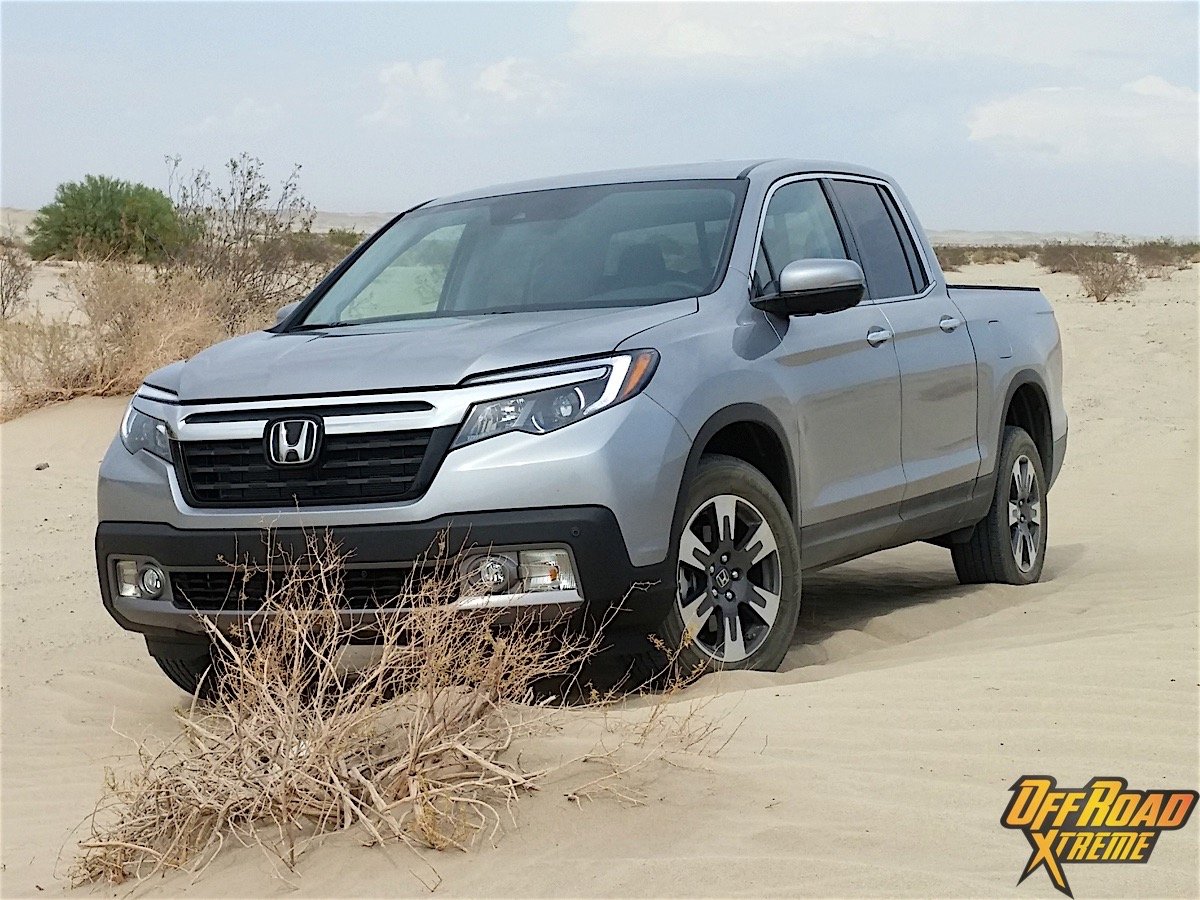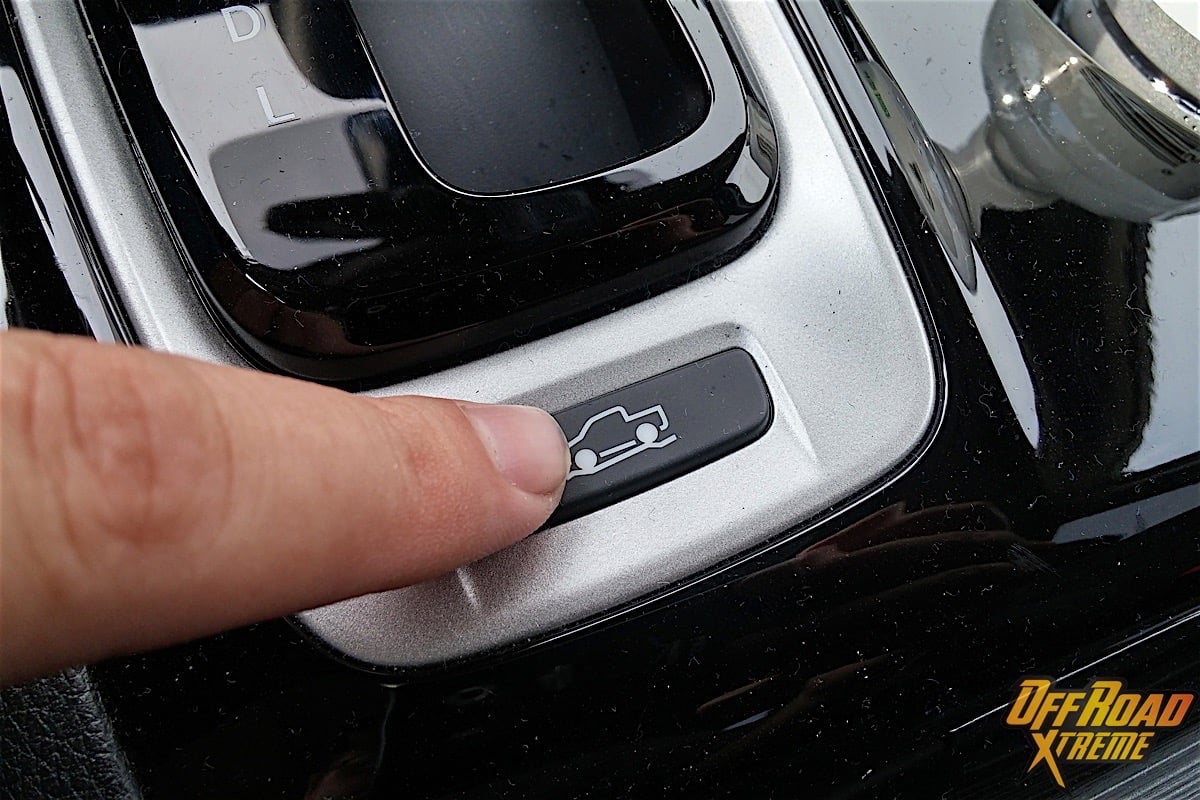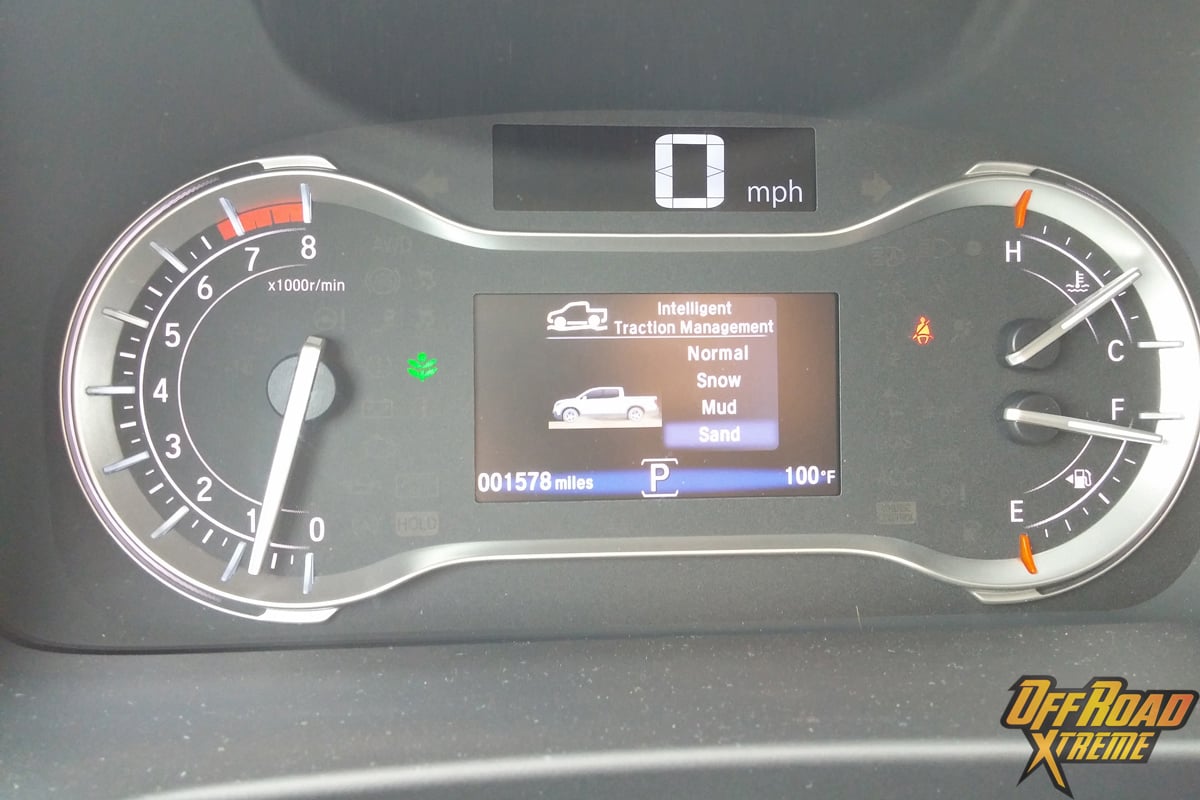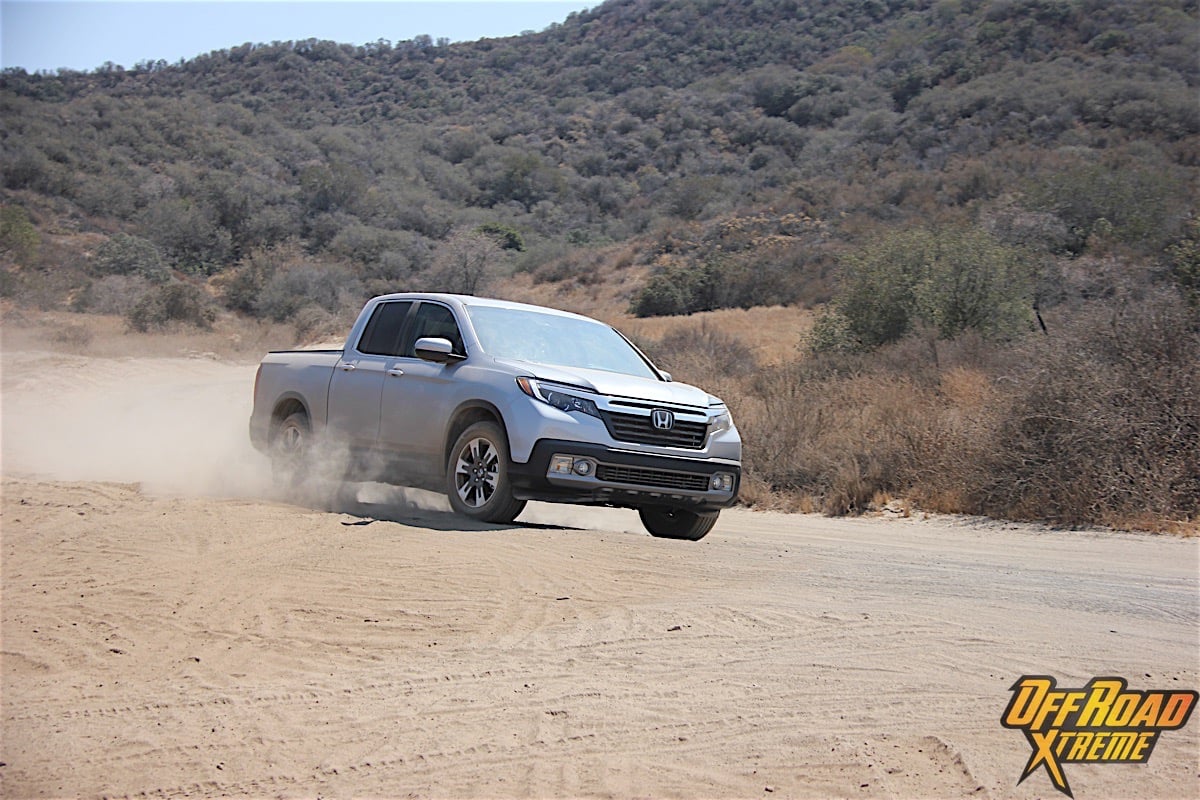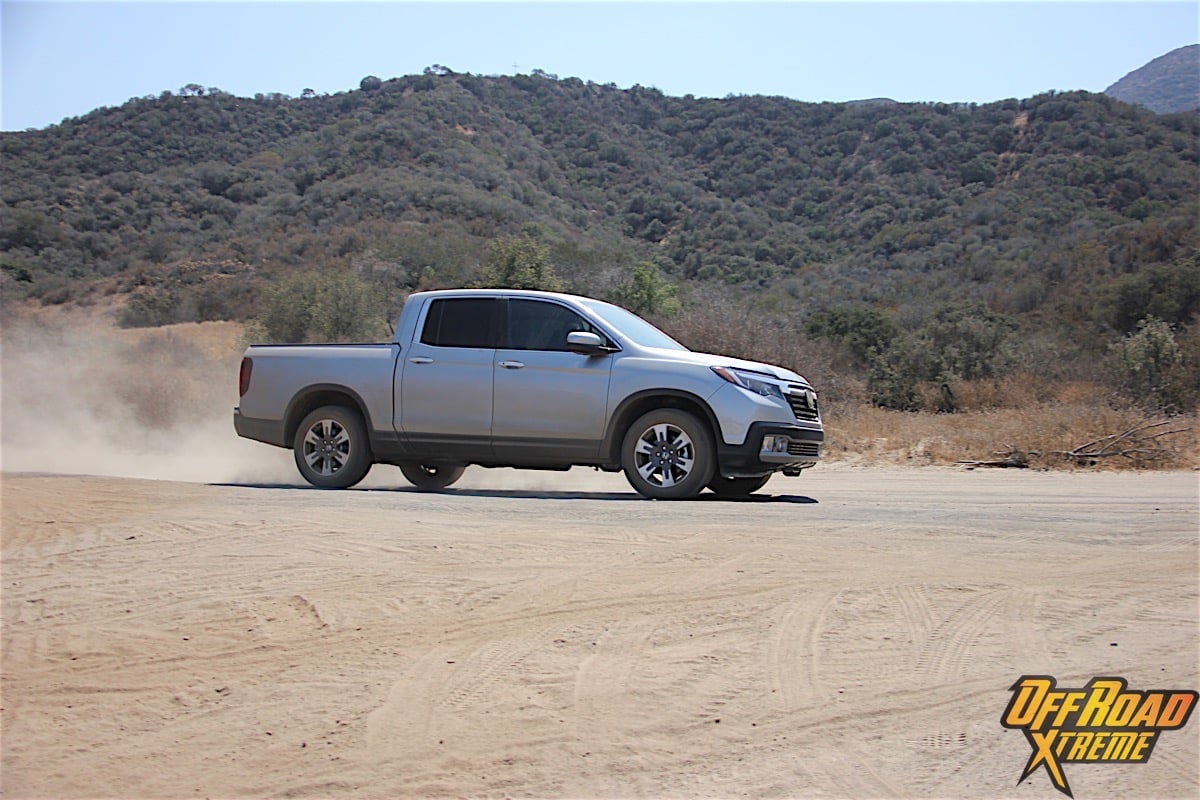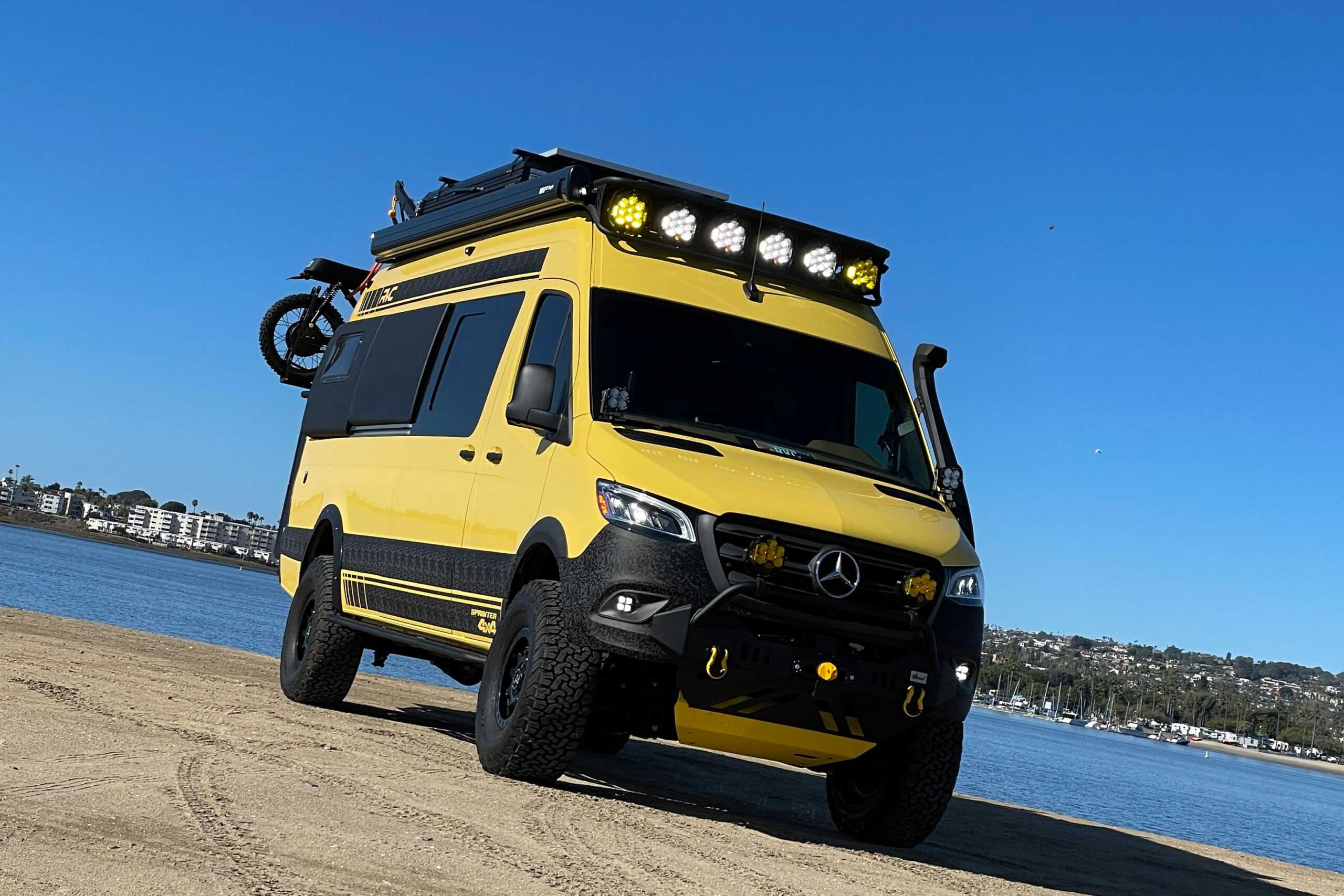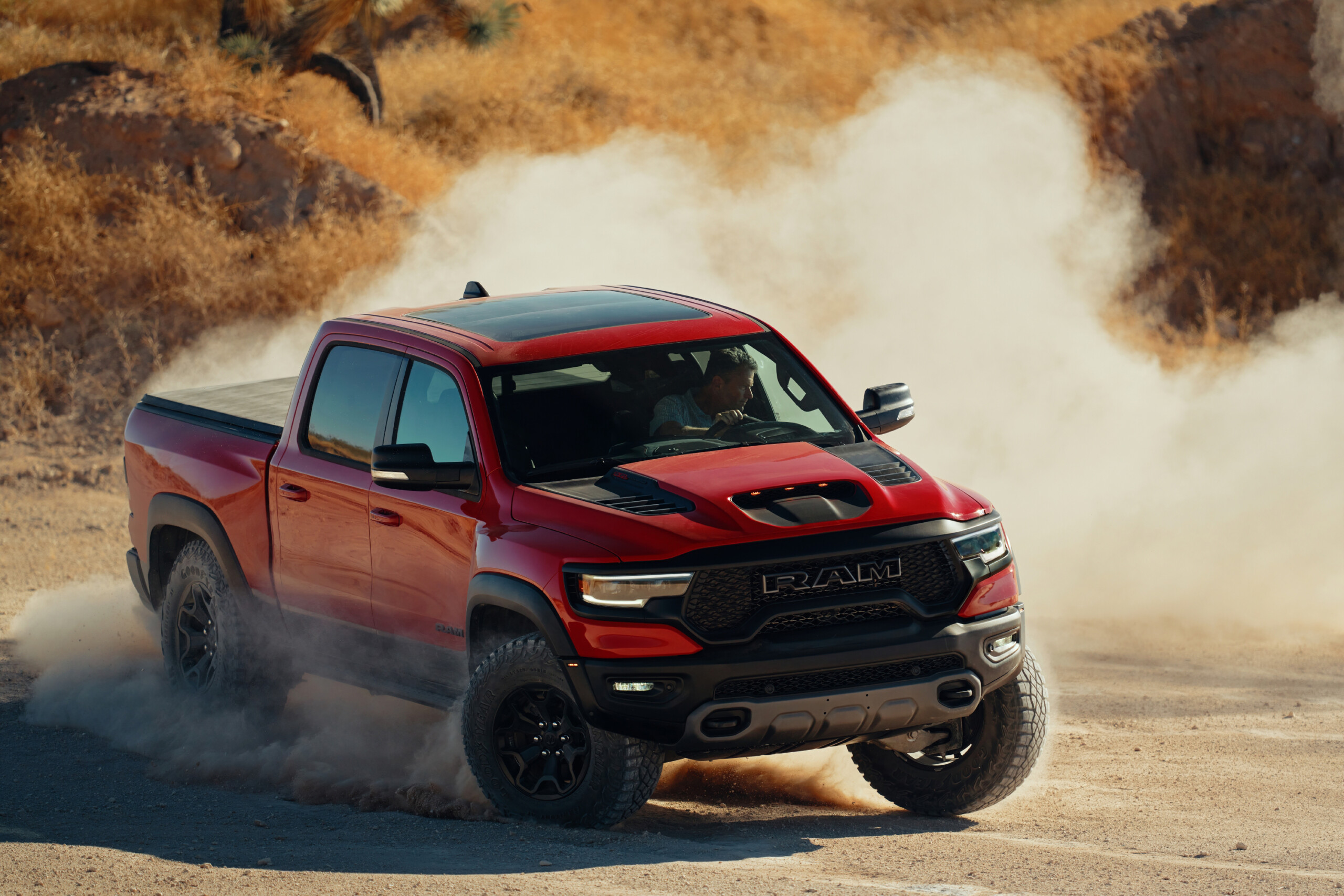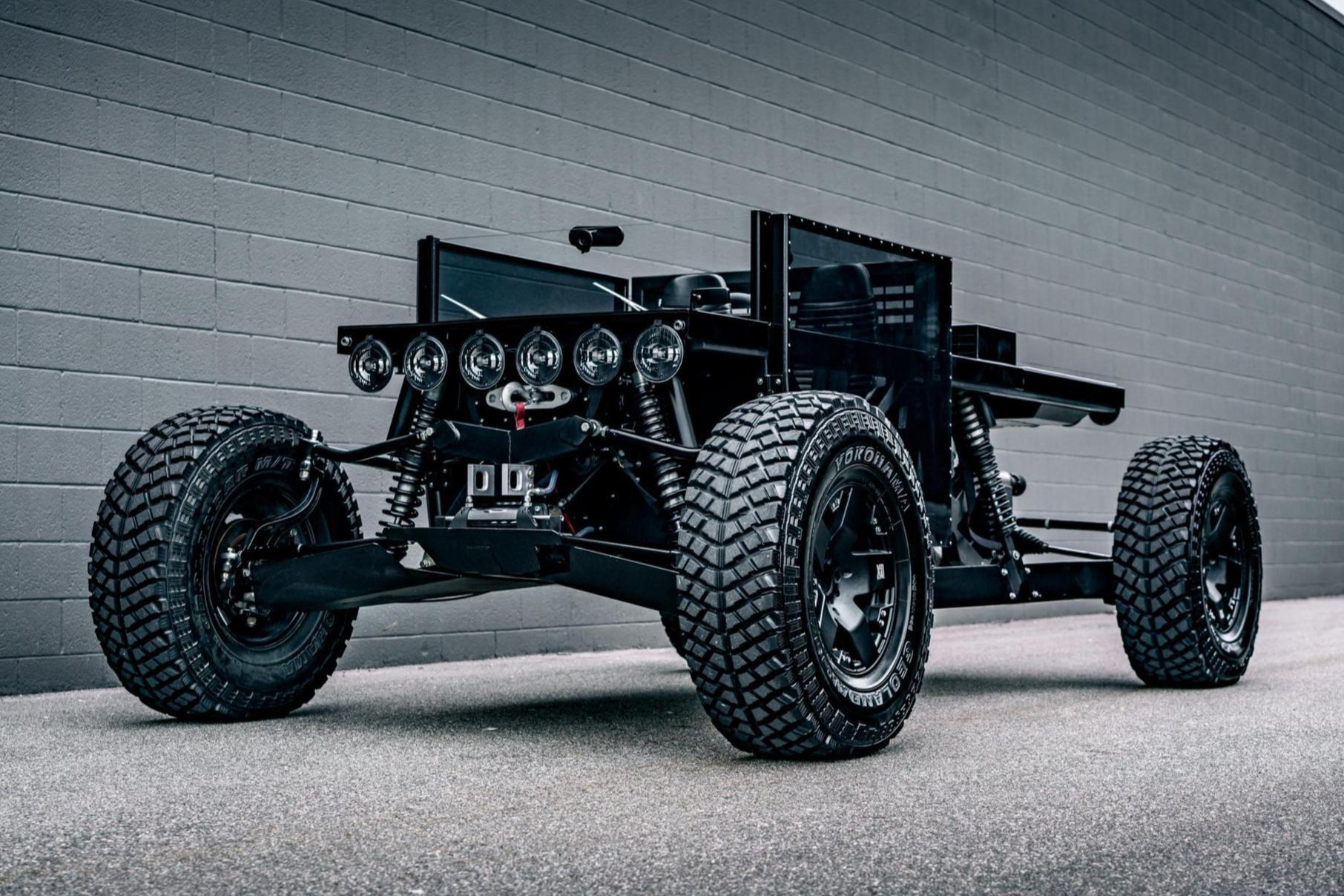The past few years have been a renewal period for many manufacturers with skin in the truck game. Ford, GM, Nissan, and Toyota have all taken a hard look at their pickups and executed great improvements in nameplates like the F-150, Colorado, Titan, and Tacoma, respectively.
Then there was Honda. Its sole entrant in the market segment over the past decade has been the Ridgeline, a unibody model that was content to occupy a niche for middle-class, suburban families in need of a pickup bed and reliable reputation. It was hardly a blip on the radar for off-roaders, owing to its unpopular IRS/IFS suspension system, and aftermarket companies weren’t jumping at the chance to supply the Ridgeline with tons of upgrades and modifications.
And it wasn’t just the suspension system that made the Ridgeline different. It also had a transverse-mounted drivetrain with all-wheel-drive instead of the normal longitudinal-mounted drivetrain with rear-wheel-drive, as well as unibody construction instead of body-on-frame construction. At every turn, the Ridgeline bucked the rules of what it meant to be a truck.

Honda bucked every trend in the book when it came to building trucks: unibody instead of body-on-frame, AWD instead of RWD, independent rear suspension instead of live axle suspension. The trend has continued on in this generation, the 2017 Ridgeline.
One could argue that Honda paid the price for these choices; Good Car Bad Car, a site that collects U.S. sales data for hundreds of makes and models, shows the Ridgeline reached its peak early. In 2006, just over 50,000 units were sold, and then the numbers tumbled to less than 17,000 by 2009.
Still, the Ridgeline found enough of a foothold for Honda to give the green light to a second generation, and we had the opportunity to whip it around for a week. As much of a curiosity as the Ridgeline is, we have to admit, that curiosity got to us. Let’s dive in and explore what this car-truck crossover has to offer.
The “Truck”

The 2017 Ridgeline comes in six trim levels. Ours was the RTL-E, the most expensive offering next to the Black Edition.
The 2017 Ridgeline comes in six trim packages, from the base model RT to the top-of-the-line Black Edition. Ours was the penultimate – RTL-E – and shared practically every option with the Black Edition save the namesake blacked-out aesthetic. Instead, ours was painted in silver (or Forest Mist, as Honda labels it).
The RTL-E comes with a laundry list of features, as you might expect, but they all read like items you would see on a sedan: all-wheel-drive, walk-away auto locking, auto-high beam headlights, etc. Most of these items derive from a severe amount of electronics, and none more so than Honda Sensing. Comprised of several safety features, Honda Sensing is tasked with aiding the driver while he or she is on the road, but we found it could do a lot more than just help; more on that later.

A lot of the features of the RTL-E are car-like in nature, such as Lane Keeping Assist System, Lane Departure Warning, Adaptive Cruise Control, and more.
Other niceties of the RTL-E package include a one-touch power moonroof, power sliding rear window, the famous truck bed audio system, LED truck bed lights, Apple CarPlay and Android Auto, and an eight-speaker 540W audio system with subwoofer. Priced as tested, the truck is valued at $42,270.
Exterior

Gone is the semi-chiseled appearance of the first-generation Ridgeline. The 2017 version is more rounded off and contoured, bringing it more in line with Honda’s design language.
Honda pulled away from the more squared-off design of the first-generation Ridgeline, and decided to make the new Ridgeline more homologous with the rest of the family. As such, it touts some very rounded-off body curves with a stubby front end, yet we’re not sure that it’s for the best.
Story-time: I had stopped to get some dessert at a Dairy Queen in Temecula, California and parked in front of the establishment, the front of the Ridgeline directly facing DQ’s doors and at distance of no more than 20 feet away. On either side of the Ridgeline were about three or four vehicles, all of them regular cars – Elantras and Maximas and the like.

Looking head-on at the Ridgeline, it has the demeanor of a car that makes it very hard to differentiate.
I had my ice cream and was walking out and was instantly hit with WDIP Syndrome – “Where Did I Park?” I sauntered for several seconds toward where the assumed parking spot was before I finally recognized the Ridgeline. Looking back, I can identify that instance as the defining moment when I could no longer see the Ridgeline as a true-blue truck, but an awkward car with a surgically implanted pickup bed.
I blame it all on the face. Say what you will about the first-generation, but it at least didn’t come out looking like something else. It was distinctive. To say the same of the 2017 Ridgeline is difficult, if not impossible, due to the sheer sameness between it and the Honda Pilot (an SUV). They might as well be twins, were it not for the fascia and fog lights.
With the exception of the fascia and fog lights, the Ridgeline looks like the spitting image of its SUV brother, the Pilot.
The rest of the body tried to go for a car-like appearance mixed with truck-ish traits, with a beltline going front to back and forward rake. The whole effect doesn’t come off well at all, so our fingers are crossed for the next generation to really go for 100-percent truck – at least in looks.
While we’re still outside, we can take a gander at the bed: at 60 inches wide, 64 inches long, and 14 inches deep, it can hold a fair amount of stuff. Carrying over from the predecessor, we have the dual-action tailgate and in-bed trunk, where you can find the scissor jack and spare tire, as well as an 80-quart tank to hold ice and drinks. Here, too, you will find (using that term loosely, since it’s hidden) perhaps the most interesting feature of the second-gen Ridgeline: its in-bed audio system.
The tailgate sacrifices a dampener and cable to allow it to drop down or open like a door.
To be fair, this was a pretty unique idea. No other truck on the market offers a way to blast music out the back, at least not without aftermarket modifications. The system works with exciters mounted onto the inside of the bed sides, which are used as acoustic devices that move air and thus act as “speakers.” We could see this as useful for tailgate parties or winding down the day next to a campsite. At max volume, the sound is fairly loud, but doesn’t handle bass very well, and the sound quality leaves something to be desired.
On the whole, the bed offers a lot and delivers it. Compared with a competing crew cab truck like the Tacoma or Colorado, it is measurably wider and longer, and doesn’t suffer crowding from wheel wells like the others.
The in-bed trunk has a lockable lid and an 80-quart tank, perfect for filling with drinks and ice. A plug at the bottom allows the contents to drain out easily.
Interior
There’s no doubt about it; when it comes to the interior, it’s easily the best aspect of the 2017 Ridgeline. The appearance has a sweeping line that merges trim pieces well with the dashboard, and there is plenty of room for the driver and passengers legs to rest without being nudged up against anything. To top it off, the bolstered leather seats are heated and powered, and all of the controls are reachable to the driver; there’s no straining to reach a button or dial.
The Ridgeline's infotainment system is largely controlled with a touchscreen, rather than using physical dials and buttons. The A/C and other electronic features are directly below, and all are within easy reach of the driver.
For its infotainment system (Honda Link), the Ridgeline is controlled entirely through either an eight-inch touchscreen display, or various buttons mounted into the steering wheel. For an added bonus, the newly minted Apple CarPlay and Android Auto apps can be linked to the infotainment system. We tested out Android Auto and found it worked seamlessly, helping us navigate to the post office or playing music through Pandora.

Econ Mode is controlled with a button and does a few things to make the Ridgeline more fuel-efficient, such as dropping the A/C fan speed and decreasing throttle sensitivity.
The are analog gauges for the tachometer, coolant temperature, and fuel level. Everything else is digital, from the speedometer to the tire pressure monitoring system. Additionally, Honda thought it was a good idea to place light-up, semicircular rings on either side of the gauge cluster. These rings acted as “mood lighting” for fuel efficiency, ranging from white (poor) to green (good), and reacted in real time to the driver’s throttle input. The novelty wore off very quickly, and we wished for the ability to turn the darn things off easily.
A cavernous center console had plenty of space for odds and ends. Above the driver, buttons control the lighting, sunroof, and sliding rear window.
Gear selection is handled with the console-mounted shifter (as it should be, if you ask me). Behind the shifter is a spacious cubby with a roll-out lid that rolls back and forth. USB and DC outlets can be found here, as well as next to the passenger; no more fighting for outlets.
In the back, passengers have decent legroom and air conditioning vents to keep them happy. The middle seat does its thing with a fold-down armrest/cupholder. For extra room, the seats do a 60/40 split and fold up to reveal a nearly flat surface for storing items.
The rear seats fold up 90 degrees to allow for a larger cargo area.
Powertrain
Yes, it has V-TEC, yo! The 3.5-liter V6 is Honda’s J35, making 280 horsepower and 262 lb-ft of torque (according to Honda). Mated to it is a six-speed automatic gearbox, and power is routed to all four wheels all the time. As such, we unfortunately could not dyno-test the Ridgeline, but Lord knows we wanted to.
V-TEC! Yes, the Ridgeline has it. Powering the truck is a 3.5-liter J35 making 280 hp and 262 lb-ft of torque.
On-Road Driving Impressions
To drive the Ridgeline is to drive in utter relaxation. Once you’ve dialed in your ideal driving climate, the truck does the rest in total aplomb. No judders, squeaks, whistles, rattles, or other distractions plague the vehicle, and we could hardly hear the outside world thanks to some incredible sound dampening from the windshield and noise-absorbing materials.
If you wanted to take the Ridgeline for a spin around town or clear across the country, it seems it would be happy to oblige. The suspension took it well as we set off on our 100-mile journey to Ocotillo Wells SVRA, gliding over any and all asphalt without any hiccups.

Driving the Ridgeline is unbelievably smooth, and is easily one of the most pleasurable trucks we’ve ever driven.
For all of the doubts we had about the V6 and AWD drivetrain, the truck drives very briskly on the road. Acceleration is there on demand, and the shifting is not flighty. Rather, the transmission holds gears for longer than we expected, making highway passing a breeze.
EPA estimates for the Ridgeline say we should get 18 miles per gallon city, and 25 miles per gallon highway, for an average of 21 miles per gallon. This estimate bore very true with our real-world driving. It was aided in part by the green “ECON” button on the left side of the dashboard.
Proof of this was from driving to and from Ocotillo Wells: on the way out there, we flipped ECON mode on and found we achieved 25.6 miles per gallon; on the way back, we turned ECON mode off and dropped to 24.1 miles per gallon, for a loss of 1.5 miles per gallon. From this, we could see Honda’s technology worked in a very real way.
When ECON mode was turned on, we could detect a lower fan speed on the A/C, as well as significantly reduced throttle input sensitivity. Despite making the truck more sluggish, it had tangible, positive effects on the fuel economy
Speaking of technology that works, we had to give Honda Sensing’s Lane Keeping Assist System (LKAS) and Adaptive Cruise Control (ACC) a shot to see how well it worked. Here’s the interesting thing – it worked amazingly. In fact, these two things worked so well, that they bordered on near-autonomous levels of driving, requiring almost no driver input.
LKAS in particular was remarkable in its ability to keep us driving perfectly on any straightaway, although Honda programmed it in a way that it would require some activity on the steering wheel after a few seconds, or it would start to veer to the side of the road – interestingly enough, however, if left completely alone, LKAS would do the job itself, steering lazily back onto asphalt just moments before going totally off the road. It was intriguing to consider that although LKAS was technically an assist system, it seemed to have the ability to drive completely on its own.

LKAS and ACC make the Honda Ridgeline a practically self-driving vehicle, as it can detect straying beyond road lines and correct speed in accordance with other drivers on the road.
Off-Road Driving Impressions
We’ve been to Ocotillo several times now to see what all of the latest trucks have to offer when it comes to off-roading. With whoops, washboards, ruts, rocks, and dunes, it’s a perfect place to test out what some desert running will do to the vehicle.
In the interest of full disclosure, we were told by Honda before receiving the Ridgeline that we were not to “flog” (paraphrasing) the truck. Our magazine name suggested that such was our way of doing things, so we had to allay these fears ahead of time.
The Ridgeline performed pretty well at Ocotillo Wells. It rode confidently over the main roads and handled washboards well, but struggled when it came to whoops and three-wheel sections.
To that end, we did only brisk runs through the SVRA, going quickly over the main roads but slowing down on when it looked dangerous. We played around with the Drive modes (a button located behind the shifter), cycling through Mud, Snow, and Sand. Sand was clearly the best option, and did wonderfully over the dusty terrain of Ocotillo Wells.

Could the Ridgeline be a prerunner? Sure, anything could. Is it the best platform out there? Hardly.
From what we could tell, the drivetrain was reprogrammed to allow for greater throttle input sensitivity, and stayed in its proper gear to give us plenty of acceleration. What this led to was the ability to carry momentum over looser patches of terrain where getting stuck would be more likely to happen.
Between this and the ample amount of clearance, we could amble through the area nimbly and skillfully, all while the excellent suspension kept the ride buttery smooth. The Ridgeline sure did like to get up on three wheels, however, thanks to the short shock travel and poor articulation of the IRS/IFS.
A push-button selector let us choose from four terrain types: Normal, Snow, Mud, and Sand. We found Sand to be the most fun, as it would let the truck stay in a gear for a longer period of time before shifting. This let the truck carry a great deal of momentum, which was perfect for Ocotillo Wells.
For a stock truck, the Ridgeline was impressive with what it could handle; we only wish it was more easily modifiable, but the IRS and IFS make that a very expensive and time-consuming endeavor, and the vehicle won’t be helped by the aftermarket.
Final Verdict
After a week with the Ridgeline, we have to admit: the truck has its merits. The bed is ample, the driving is sublime, the interior is comfortable as all get-out, and the fuel economy is tangible and rewarding.
But there is the flipside. When it comes to off-roading, an AWD drivetrain with no low-range gearing, nor a ground clearance that can be modified simply, are a severe handicap for the Ridgeline. It’s not meant for arduous or even moderate trails, but it can handle the light stuff like fire trails, gravel, and undulating country roads.
The Ridgeline can handle a lot of what a middle-class mom and dad want in a truck, while delivering great fuel economy and terrific ride comfort. However, it is not well-suited to off-pavement abuse, and the price tag – $42,000 – really closes the case on this ever being a good choice for off-roaders.
If you ask us, “Who is the Ridgeline for, actually?” We can only surmise that it is meant for the Honda fan that wants the truck experience. That, or a middle-class family that has heard good things about Honda, and now needs a pickup bed to carry bikes, camping gear, and the occasional tailgate party supplies.
For everyone else – contractors, off-road enthusiasts, truck enthusiasts, or tradesmen – you should look elsewhere. $42,000 for an RTL-E definitely does seem a lot higher than necessary. Especially when considering that kind of cheddar will get you a very well-equipped 2017 Tacoma TRD Off-Road ($39,000) or 2017 Colorado Z71 ($43,000), both with four-wheel-drive.
Honda’s current slogan is “The Power Of Dreams.” All we’ll say is, it looks like we’ll have to keep on dreaming of a real 4×4 to emerge from the automaker.



